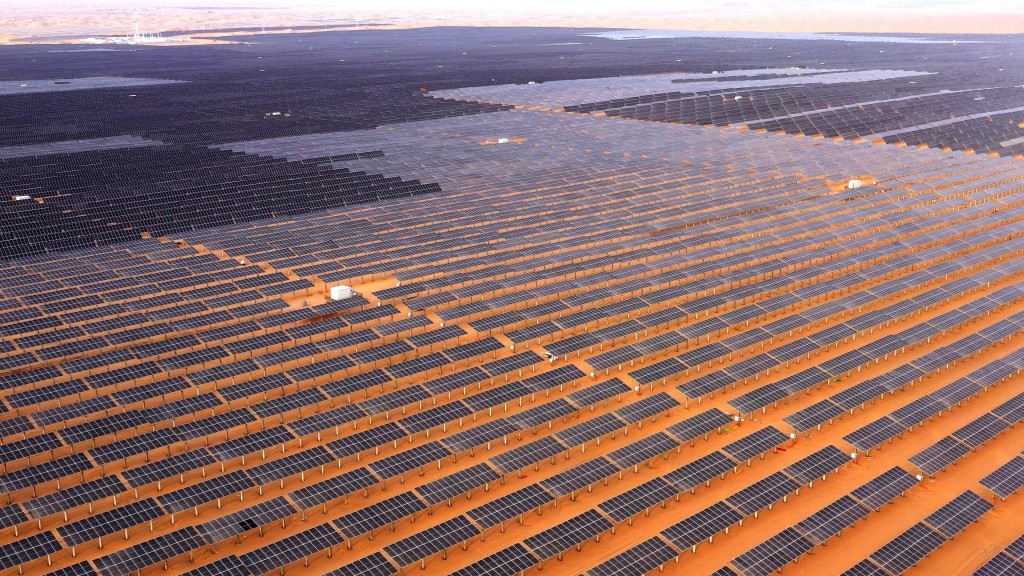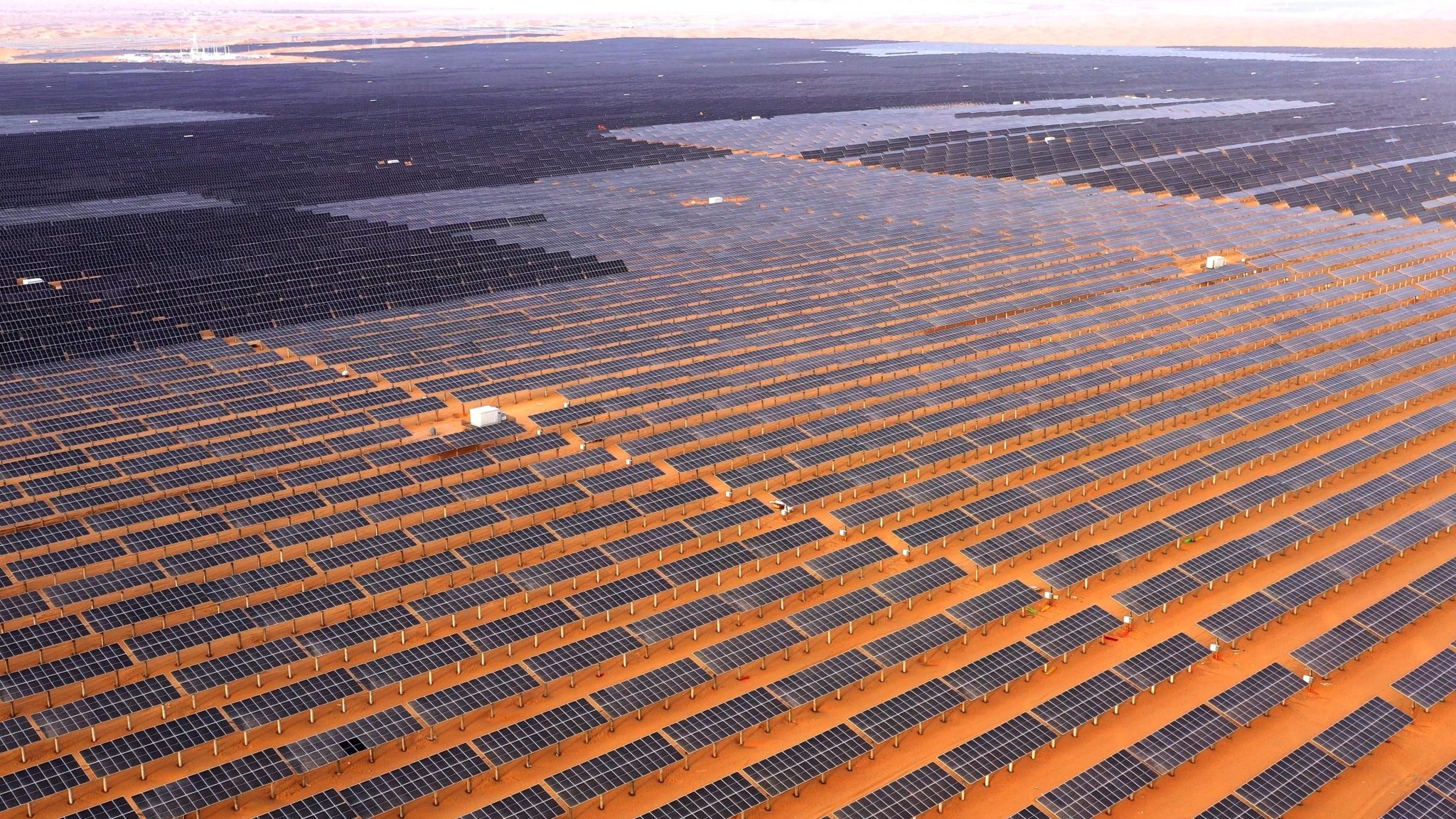
Aside from teacups and rice bowls, China doesn’t do anything on a small scale. To wit, their recently-completed solar array in Ningxia Hui is gargantuan—capable of powering 1.5 million homes.
Billed as 1 million kilowatts of capacity, and capable of generating 1.8 billion kilowatt-hours per year, the Ningxia Hui array is the first of several giant renewable energy projects slated for construction in the arid western areas like the Gobi, Tengger, and Taklamakan deserts.
China Energy Investment Corp. says it is the first solar farm in the country to include an ultrahigh-voltage power transmission channel that will bring the electricity generated there to the central Hunan Province.
The transmission is a result of Hunan having a population of 66 million people, compared to Ningxia’s 7 million.
In their most recent Five Year Plan, the Chinese government outlined their intention to install 100 gigawatts of renewable energy by 2026; particularly solar and wind in the desert regions.
MORE INTERNATIONAL DEVELOPMENT: Inspired by Marvel’s Mythical ‘Wakanda’, Ugandan Village is Built on Shea Butter and Solar Power
The National Energy Administration said installed capacity of renewable energy in China continued to expand in the first quarter, reaching 47.4 million kW, an increase of 86.5% compared with the same period last year.
Like most rural Chinese provinces, Ningxia, along with Xinjiang and Inner Mongolia—the provinces wherein rest the three deserts mentioned above, rely heavily on coal for electricity, and the major installations of solar and wind are hoped to accelerate economic development in these mostly-agricultural economies.
SHARE This Inspiring Renewable Energy Project With Your Friends…




















